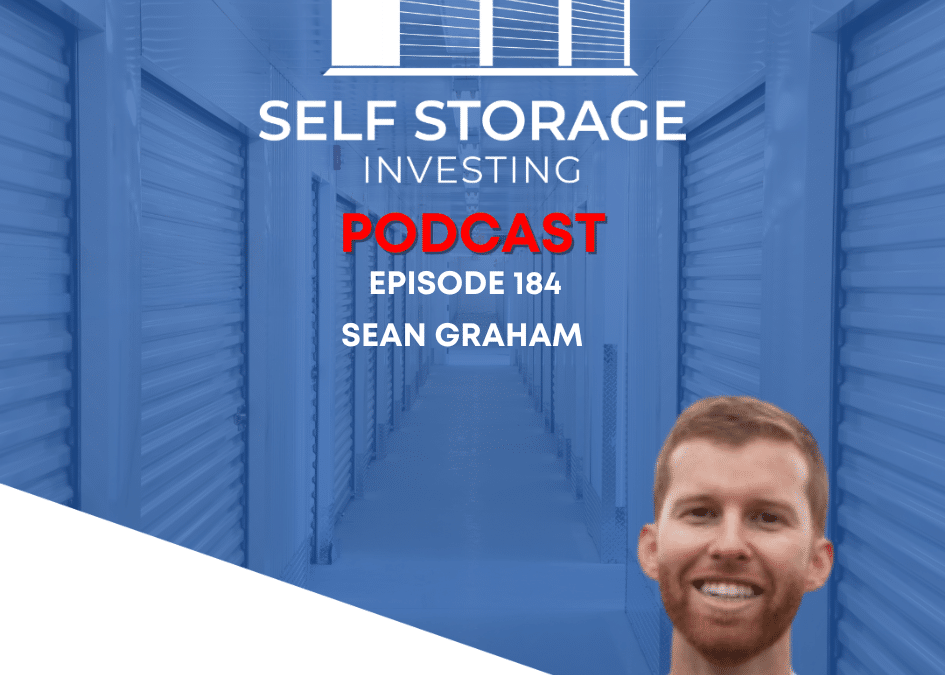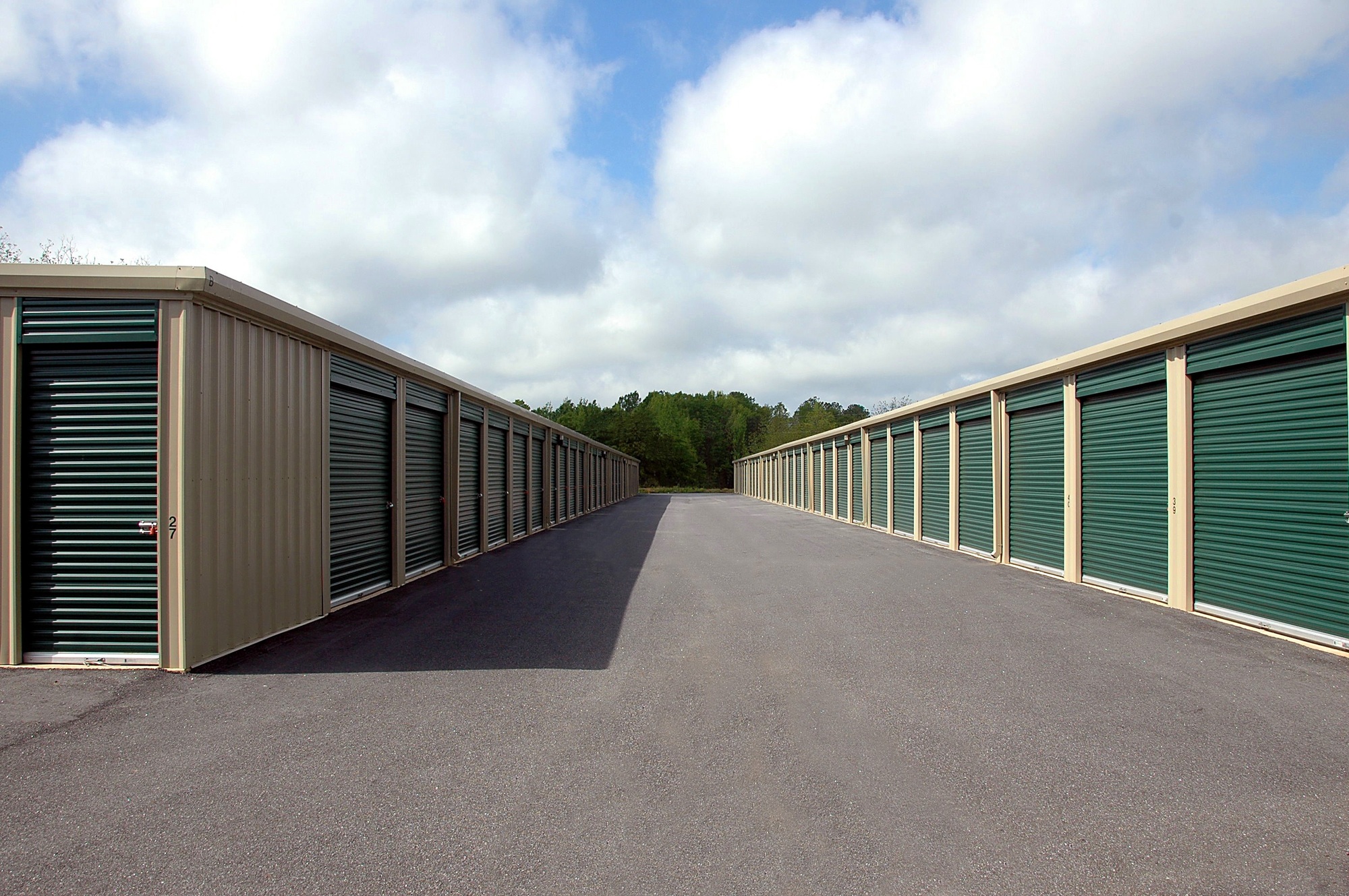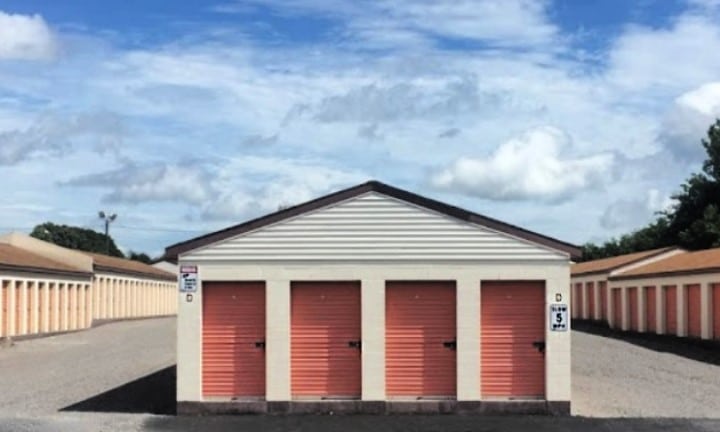Are you leveraging every financial advantage in your self-storage business?
In this episode, Scott Meyers, the original SELF-STORAGE EXPERT, welcomes back Sean Graham to discuss the benefits of cost segregation for real estate investors, particularly those in the self-storage sector.
Sean, a CPA with extensive experience in real estate and cost segregation, explains how this strategy can significantly accelerate depreciation, providing substantial tax benefits by front-loading expenses.
They cover the financial implications, the potential savings, and the practical application of cost segregation studies, emphasizing the value of understanding and utilizing these financial tools.
The conversation also touches on the efficiency of using virtual assistants for property management and other business operations, highlighting the cost-effective solutions available for real estate professionals.
WHAT TO LISTEN FOR
02:36 – Benefits of Cost Segregation for Self-Storage Owners
07:31 – Detailed engineering studies
18:10 – Time Value of Money and Inflation
24:45 – Property Management with Virtual Assistants
Leave a rating for this podcast with one click
Sean Graham
LinkedIn | Maven Cost Segregation | Maven Cost Seg. Email | Maven Success
Get the discount Sean mentioned
CONNECT WITH US
Website | You Tube | Facebook | X | LinkedIn | Instagram
Follow so you never miss a NEW episode! Leave us an honest rating and review on Apple or Spotify.
Episode Transcript
Announcer (00:03):
This is the Self-Storage Podcast.
Scott Meyers (00:10):
Hello everyone and welcome back to the Self-Storage Podcast. I’m your host at Scott Meyers. And on today’s episode we have a returning guest, Mr. Sean Graham from episode 1 35. The last time we talked, Sean and I discussed how he was using virtual assistance to remotely manage third party for other folks, how he’s been doing it in his own business and how Maven equities has just burst onto the scene and providing all types of solutions in the VA world for real estate investors on the property management side, which we don’t normally see, but what we’re going to be covering at today is the range of deliverables that he is now including for his clients, includes cost segregation. So that is near and dear to our heart as well as many others out there that are always looking for an edge or a way to once again drive NOI by reducing expenses and maximizing our revenue. So Sean, welcome back to the show.
Sean Graham (00:57):
Hey Scott, thanks for having me. I’m excited to be here.
Scott Meyers (01:00):
Well, I’m too, as we’ve been chatting about cost segregation around this circle, as well as just briefly knowing now that you are into this realm as well, been excited to have you back on the podcast to talk about it. So get us up to speed on what you’ve been doing since we last chatted, and then let’s dive in and talk about cost segregation.
Sean Graham (01:16):
Yeah, I appreciate that. So as I mentioned on the previous show, I started out, my background originally was as a CPA, so I’m still a registered CPA in the state of Michigan, and I’ve always had that entrepreneurial spirit. So I ventured out and I got into real estate and then I got into self-storage, and that’s really just branched into a couple other things for me. So as we spoke about before, I have the VA headhunting company, the VA placement company, as well as a cost segregation company that we started really this year and we’ve been doing a lot of backend work, back office work for other larger cost segregation companies and we’ve just publicly launched and we’re going forward and opening it up and marketing to the world now.
Scott Meyers (02:08):
Alright, so let’s just pretend, Sean, that there are some folks that are, which there are on this podcast Storage Nation. Not everybody is in self-storage or some folks are new to the self-storage game or maybe even new to real estate and they haven’t looked into cost segregation. And so you do this for multiple asset classes, the self-storage podcast. So let’s talk about what this looks like and what the benefit is to self-storage owners and why they should be at least exploring opportunities to do a cost segregation study.
Sean Graham (02:36):
Yes, absolutely. So cost segregation really is a way to accelerate your depreciation losses. So what IRS allows you to do is it allows you to break down the components of your real estate, your building into different lifespan classes. And with cost segregation, the idea is to really maximize the components that are going into the five or 15 year life so that you get that they’re eligible for the bonus depreciation. So the idea is to front load your depreciation expenses so that you can expense more in year one or in the earlier years as opposed to waiting 39 years to depreciate your entire property. So the benefits of that right, is they really create passive losses that allow you to offset your passive income. Everybody knows with real estate that there’s a lot of ways where real estate investors have to pay very minimal taxes if sometimes zero taxes, and a lot of that is because of depreciation.
Scott Meyers (03:39):
So we’ve got a number of folks that are new to the game looking into self-storage and they’re looking into not only development but also existing facilities. And there is a cost associated with this and for multiple reasons, it seems like folks may opt not to do a cost segregation study. So Sean, I may do this and be able to write a fair amount off in the first year or in the second year, and depending on the new tax laws, maybe all of it upfront, but if I’m going to sell this within just a couple of years, there’s going to be a recapture. Do you do any consulting with folks on the front end to sit down and determine whether it makes sense for them to go forward before they pay for it and then get the reduction only to have to recapture it on the backend when they sell, if it’s a short term hold?
Sean Graham (04:27):
Right. Well, it all comes down to the time value of money, Scott. So if you’re going to hold this property for I would say two years at least or three years, then the chances are you’d want to do a cost segregation study. So there are recapture rules. So when you go to sell the property, you do have recapture, but the recapture is at a certain rate, so that rate could actually be less than what you are paying in taxes in general, right? So the depreciation recapture could actually help you save taxes even when you do have to go back and account for the recapture at the sale. The idea is that you keep investing in real estate, you keep rolling forward depreciation losses, and as most self-storage investors are who are doing this full time, we also have the real estate professional rule so we can keep buying more property accumulating depreciation and really offsetting these tax gains that we would typically have to pay taxes on if we weren’t.
(05:30):
So yeah, that’s really been the main focus and we’ve been doing a lot of work with self storage owners and we have different products, different options for that, but it, it’s funny, it’s all tied into my background as a CPA because before I was doing taxes in public accounting and we were doing cost segregation as well, and then got out of that and I got into self storage and I got into other things and everything has come full circle where I’ve been able to build out this cost segregation company by using overseas talent as well. So as far as the IRS work, the national cost segregation study, what goes into what lifespan components, that’s my job as a CPA. But for the other work and the engineering work and really breaking down these buildings, we’ve actually been able to utilize a lot of overseas engineers as well. So it’s just interesting because you never know where business is going and then a few years down the line, everything starts connecting and yeah, it’s been a fun journey.
Scott Meyers (06:44):
So let’s go through say a live case study. You don’t have to divulge any clients obviously or their facilities, but what does this look like for somebody who’s got a, I would say our bread and butter or sweet spot for most of the folks that we work with, they got a one and a half to $2 million facility and they’ve owned it for a couple of years now. And if this something that they’re looking to do, what is roughly the cost of a study? And you can be general, I’m not going to hold you at any price, but roughly the cost and then what are maybe the average benefit that you would see from doing a study in terms of the return on that. So what would they see in the first year and the second year and they’re on out just to get an idea so that people, if they’re wondering, is it really worth it and why do I even want to pay attention to the rest of this podcast?
Sean Graham (07:31):
Yeah, absolutely. I think there’s traditionally all the cost segregation firms have done what we call a detailed engineering study. And so a detailed engineering study is truly a deep dive into your property and it breaks down every single component line item by line item and uses all of the engineering work to classify what goes into what life, and that’s fantastic. I think the problem with the detailed engineering studies often is that for people who are buying a basic self storage facility, you’re talking a million dollars, all metal buildings, exterior drive up, roll up doors, they’re really simple studies, and so detailed engineering studies often start at around $5,000. They can go from $5,000 up to over $10,000 easily. It just kind of depends on the scope of the work and the size of the facility, if it’s climate controlled or not climate controlled. What we started offering actually is what we call the IRS refers to as a modeling study.
(08:38):
So the modeling study, I think the advantages there are that one is a much lower price point. So rather than paying $5,000 for a detailed engineering study, we have an option called the modeling study, which starts at $950. And this allows us to really streamline the basic roll up doors, basic outdoor self-storage facilities and do ’em in a way where we already have the process down, we have the template, we know exactly what we’re looking for, we’ve built this out, and so we can streamline these and it’s really been an efficient type of model and it’s something that the IRS recognizes as well. So as far as the benefits, right, so bonus depreciation, which was set up with the tax cuts in Jobs Act back in 2017 introduced 100% bonus depreciation. So what that means is anything that’s less than 20 year lifespan, you can actually depreciate 100% in year one.
(09:42):
So just some examples, land improvements, that is 15 year life, we’re talking about sidewalks or pavement, that could all be depreciated in year one, 100%. As far as the five-year life we’re talking, maybe we have exterior lighting or we have on, let’s just say climate controlled buildings like the indoor roll up doors, ones that aren’t part of the external building, they’re not part of the actual structure, but the interior units or the partition walls, all that stuff can be depreciated in five years. And so with the bonus depreciation, you could depreciate a hundred percent of that. Well, that started phase out. So in 2022, that was the last year of 100% bonus. Every single year since then, it’s reducing by 20%. So in 2023 it was 80% bonus depreciation in 2024, it’s 60% bonus depreciation, but there’s a lot of benefits to it, and I highly recommend if you are in self storage at all to get a cost segregation study done.
(10:52):
Now, depending on if you want the detail of the modeling study, I think some factors go into that and how detailed you want and need to get. If you’re doing a large syndication and you have indoor climb control facility, you want to get a detailed study done. So that’s going to get into all the nitty gritty. It’s going to cover everything from all the interior lighting to the molding and all of the details that the modeling study might not capture. That’s really better for these just basic exterior buildings. But like everything else, it depends on the actual bonus depreciation. You first, you have to take out the land value. And so the land value can really, really vary. If you’re in a suburban area and it’s prime land, prime real estate, that value is going to be high. If you’re out in the country, this value could be very low.
(11:52):
So that’s one factor. But then when you take out the land value, you have the rest, you have the remaining depreciable asset, right? And with that, we can deduct different, it really, again, it depends, but we see an average of about 30% going towards that, going towards the less than 20 year life in year one. So sometimes it’s 25. Sometimes with the climate control facilities, it could be higher, it could be up to 40%. So there’s not a one size fits all. It’s going to depend on facility to facility. But for basic exterior, non-line controlled facilities, you’re looking at somewhere around 25% to 30%.
Scott Meyers (12:40):
Okay, and that’s of the items to depreciate or 25 to 30% of the overall value of the facility minus the land?
Sean Graham (12:48):
Yes, correct. Of the overall value minus the value of the land. If we were to walk through just an example, let’s just say you have a $1.2 million self-storage facility that you purchased and the value of the land, which you have to determine, there’s no set way of saying this is the exact value of the land. We can look at property tax cards, we can look at comps, but let’s just say it’s $200,000, so you have a million dollar depreciable asset. So out of that, approximately 250 $300,000 really is eligible for that bonus depreciation. Now, out of that $300,000 for 2024, we’re looking about 60% can just be depreciated in year one. The remaining 40% will be depreciated over the five year life or the 15 year life.
Scott Meyers (13:37):
So there is a movement afoot to bring that back to the place where we can take 100% of the bonus depreciation in year one. What are your odds? What do you think are the odds that it’s going to get passed by both the House and the Senate?
Sean Graham (13:48):
I don’t know, and I really don’t know. I guess I like to answer to these things as 50 50 Scott, because it either happens or it doesn’t happen. So I don’t know. I think bonus depreciation has been different forms of, it has been around for a long time, so we’re talking decades in terms of the depreciation laws and benefiting real estate investors. So one, I would say it’s not going away. I think that a new act will roll out sooner or later that really incentivizes people to invest in real estate. So that’s not going away, that’s just going to continue to happen. Even if we see all this phase out, there’s still so much benefit to the cost segregation study because if you don’t get a cost segregation study, well then you’re just taking that $1 million basis and you’re depreciating it over 39 years, which is not much.
(14:45):
So part of that, if we can get, let’s just say 10% in five year life and we get another 20% into 15 year life, well that depreciation is real, right? Depreciation being something over five years, first 39 years makes a big difference. So you’re never going to get everything into that less than 20 year life, you’re going to get plenty that’s still in 39 year life. But yeah, I think it’s still very beneficial and there’s a lot of incentives to doing it, especially the way the IRS looks at it is you have passive income is offset by passive losses. And so when you’re looking at real estate in general or self storage, you are talking about passive income and with depreciation, that’s all passive losses and so lets you completely offset all of that income. So you’re going to get the most appreciation when you do a cost segregation study.
(15:55):
And the other benefits are, like I said before, if you are a real estate professional, which a lot of us are in self storage, well then those passive losses, they can go into your other, they can offset active income, active gains. So let’s just say your spouse, your spouse is a W2 earner, which is a hundred thousand dollars income, and you are a real estate professional, and you have from your self storage facility, you have $100,000 extra of depreciation losses. We can fully offset that W2 income assuming you’re married, filing jointly unless you pay zero taxes. So there is a lot of benefit, and I would highly recommend everyone in real estate, even I think other people who are in different types of real estate, they’re not as inclined to get the cost studies done. Again, a lot of that comes down to price point, but that’s why we offer these modeling studies for just basic self storage or for basic single family homes. Nothing like no luxury type of Airbnbs that are a couple million dollars, but just the simple, straightforward homes. We have these models set up these templates where we can really streamline the process and get these studies done at a very reasonable price point.
Scott Meyers (17:29):
Well, here are the benefits that I see if anybody is on the fence, and that is what we’ve seen at least in recent years, is the time value of money with inflation and what is happening in the global economy at large with costs still continuing to go up, even if you think that inflation is in check, why wouldn’t you want to grab those dollars and have them back at disposal in the beginning? Now instead of waiting to take all those, that depreciation of 39 and a half years, the value of the dollar is going to do nothing but decline just because of the time value of money, period. So I see that as I always look for an opportunity to be able to get cash back in my hands that I can utilize today so I can reinvest it so that I can stay ahead of any type of inflation.
(18:10):
And just because we know what to do with cash and we can multiply it by investing in more real estate also, right now it’s a challenge out there. The cost of everything has gone up, insurance and just about everything. So why wouldn’t you want to do this? And even just to bolster your cash reserve account, your lease up, reserve, your interest reserve or whatever that looks like, just to have the cash in place right now is another benefit I see to doing this. But probably the bigger one for us right now, Sean, is that we’re raising capital on virtually every project that we take on right now and everybody’s looking for depreciation. And so when we’re talking with our investors, we have a strategy in which we’re doing our best to get as much depreciation back to our limited partners as possible. So in some of these projects, we as general partners, we don’t even take the depreciation ourselves as the owners.
(19:00):
And then in other instances we have, or in addition to that, we will bifurcate the shares so that if any of our investors are investing out of, and then the returns and distributions are going back into some type of a self-directed vehicle, they can’t take advantage of the depreciation anyways. And so many other syndicators that just, they spew out the K ones and it’s split amongst all of ’em, and it goes without being used on some of those other, the folks that can’t use it. So when we bifurcate the shares, that means that once we close out our fund, if it’s an individual property, we look at which investors can take the depreciation, which can’t, and then we divide those shares up and send all the depreciation to those that can. And so in our conversations with these folks, that is one feather in our cap, if you will.
(19:50):
But the second is if I have a modeling study done by you folks and you get it turned around very quickly, then as I’m talking to those investors before the deal closes, I can now put a number to it and say, here’s roughly not 100%, but here’s roughly the amount of depreciation you can expect by putting 50,000 or a hundred thousand dollars in our project. This is how much is coming back. We expect this many investors to be in the project. This many will approximately take the depreciation and we already have a study done, and here’s what we think is going to be coming back. And that is huge for everybody that’s chasing depreciation right now.
Sean Graham (20:21):
Yep, absolutely. I completely agree with that. I think that a lot of the retirement vehicles, they’re already tax protected, so there’s no point in allocating depreciation towards the people who are investing with their Roth IRAs. But that’s fantastic because you set it up in the operating agreement ahead of time, how the depreciation is allocated to your investors. And it’s a huge benefit because the accredited investors, a lot of times they’re investing passively. And so to them, this is a passive investment, it’s passive income, and when they’re getting paid out, they’re starting to make profit or they get their distributions from profits, well, the depreciation losses will offset that income, and so they don’t have to pay taxes on it. And I think another thing to note is a lot of people, they want to keep rolling it forward. So let’s just say you sell the syndication, it sells and you do well on it, you get your investors a great return on their money.
(21:29):
Well, the investors don’t want to pay the taxes on that. And so some of ’em are still qualify as real estate professionals. And so they will invest in another syndication and they will get the depreciation losses from that syndication, and it’ll help them offset the gains that they made from a previous syndication that they already exited and they saw a good return on. So there are a lot of benefits to it. And yeah, I do see that, right with syndicators, a lot of us, we already have enough depreciation to offset. We’ve done enough deals where we don’t need the extra depreciation, it’s just sitting there, it’s not doing us that much good. And so we’re able to allocate more of that to the investors and that helps them offset their taxes. So it’s a great strategy that I think a lot of people just need to think about.
(22:35):
And if they’re not right, it’s a good selling point too with the syndications, and we can do the estimates ahead of time. So we like to be conservative where we under promise, over deliver, where we’re not, you’re not promising your investors something super high and then they come back and they’re like, this isn’t nearly what we talked about. So that’s the goal, but we can get investments or we can get estimates out ahead of time to you and to your team to see what that looks like. And even on the syndications, sometimes it makes sense to do those modeling studies still, if it’s just a smaller facility, one $2 million facility that they don’t need the full detailed study. It’s just a basic, again, roll up doors, steel building facility. So it’s all a case by case basis, but we can look at those. And yeah, I think that’s one of our advantages too, is the team is we have a lean team, we’re all remote, we work worldwide, and we’re able to do these things quicker and get a pretty fast turnaround time. So I’m very excited about the business and just the opportunities that come with it and the way we can help people save money and pass along, pass along those savings to their investors and their partners.
Scott Meyers (24:04):
Yep. Well, it’s no-brainer, Sean in my book. And so Storage Nation, you should be at least looking into this. It ought to be on your radar now and at the price that Sean has just quoted at nine 50. And this definitely something that you should look at because the returns are there for you, and of course if you’re bringing equity partners in. So Sean, I wanted to switch gears and talk about the property management side and get an update as to what you’ve seen since the last time we chatted, anything in the market, any trends that we should be looking out for, and then how you’ve been able to add value to owners and managers with your services by having VAs do some of that heavy lifting. Before that, how do people find out more about how to get in touch with you regarding cost EG studies?
Sean Graham (24:45):
Yeah, so I will put a link up and just for your listeners just so that they can get a discount too. So if you just go to maven eg.com, if you go to forward slash Scott, that’s what I’ll do. I’ll have the team do, and they’ll get a discount on that so that your listeners, I know whether they’re self storage people coming from your network and that, we’ll put a discount on there, but maven cost seg.com/scott, and I’ll give you the link afterwards. We can put it in the show notes too.
Scott Meyers (25:18):
Awesome. Perfect. Yep, we’ll put that in the show notes. So let’s jump over to the property management side. And again, just recognizing and realizing how much you can do with the management side using Utilizing VAs. What have you learned, what’s new? What have you added since the last time we’ve chatted? I know you’ve been growing at a pretty good clip, so fill us in what’s happened since the last time we chatted?
Sean Graham (25:42):
Yeah, so just being an entrepreneur, starting out on my own, I’ve done everything using overseas talent, overseas teams, and I’ve hired all sorts of roles and we’re talking everything from CPAs to engineers to just personal assistance, marketing, accounting, all of it. And we started doing it for other people. And so we aren’t doing property management, but we are helping property management companies staff, and we are helping other self storage owners who are just running the facilities themselves, hire overseas as well, because that’s essentially what I’ve done, everything I’ve done to even manage my own smaller facilities. It’s all with overseas talent. So I think one thing that we’ve improved quite a bit on is the getting CPAs overseas, CPAs. I think finding the right accountant can be tough, and we’ve been able to tap into a much higher quality level of talent for accounting work, right?
(26:49):
So when you’re talking about doing syndications or you have multiple LLCs, every self storage facilities in a different LLC, you have a are rolling up into a holding company, there’s a lot of bank reconciliations, a lot of many QuickBooks to handle, getting financial reporting out to your investors and just keeping up with everything in real time so that you have a real grip on it. And so I really love that role for accounting. Hiring A CPA here can cost $250 an hour easily, just depends on who you’re hiring. And that’s not to say that they’re not worth it. They charge that much because they are worth that price point. And so I definitely recommend working, having your US CPA here, but it’s more a matter of leveraging them correctly and having them focus on the work that they actually should be doing. Making sure for your taxes and your tax returns, everything is filed correctly now in your investors.
(28:00):
The K ones are going out correctly, everything’s on point. So for the day-to-Day bookkeeping though, we’ve been able to hire CPAs from different countries, from the Middle East, from the Philippines, all over, and they have different credentials. There’s not the US CPA certification, although the US is opening it up to the Philippines where people in the Philippines can take the US CPA test, but typically it’s their home country’s certified public accountant credentials. However, a lot of the people that we end up hiring, they still have worked for big four accounting firms and they have a lot to offer, a lot of value. And it’s been great working with those overseas people and helping people staff here because rather than doing something at $250 an hour, you’re able to hire a CPA who could be a senior manager in public accounting, and they want more work, they want to make more money, and they’re able to do it at $15 an hour.
(29:07):
Sometimes it’s less than that, sometimes it’s $10 an hour. It all just kind of depends on who you hire, but that’s a great living for them and it’s a great price point for us. So I would say the accounting is really a big one that we’ve been able to niche down on regarding the property management type of services that is incorporated. Outside of that, we staff a lot for call center agents. We’ve been able to find people who speak excellent English in different countries. So minimal accent or note, you wouldn’t know that they’re from a different country. And I think that’s been fantastic. So Egypt has been one of those countries for us that has been really good for call center type of roles. Anything that has to do with tenant communication, with email, text, calling tenants or receiving calls, all that has been very good for property management and other countries as well.
(30:11):
But we’ve just seen a lot of success in Egypt. And I would say outside of that, more people are hiring acquisition managers. And you can look at that role as a couple different things, but I would say it could simply be an appointment setter, right? Or it could be somebody who takes it a little bit further. And so with an acquisition manager, again, you want somebody who can communicate, who speaks great English, and they’re able to really do the outreach for you and manage your CRM, build relationships, keep in touch with people, but it can be as simple as, Hey, just give me the information about your self storage facility. What’s the square footage, the number of units, maybe they can give you some financial information. And just making sure as long as it fits your buy box, then setting up an appointment for you to talk to those people.
(31:09):
So the last self storage facility we closed on, my acquisition manager helped do that and helped do that just by setting up through a cold email campaign. And as soon as that person, she was interested, then that’s how we built the relationship. I just took it from there, but to the point where she didn’t even know behind it, that was somebody else, right? It’s just all being set up from Nicole, the email campaign with overseas talent, overseas help. So I would say accounting, the property management or just different roles and operations and acquisitions have all been very successful roles within the self storage industry, but just in real estate in general.
Scott Meyers (32:02):
Well, Sean, I can say that Christina, who is in operations has had nothing but good things to say about the discussions she’s had with your organization. And so we appreciate the extra handholding and the help with that as well. As well from our last podcast, we have some folks in our mastermind that are looking into utilizing your services and looking forward to having you out at our mastermind as well. So all good things happening by what you’re doing and what you’re providing to the storage space. So with that, Sean, what have you been reading lately? What have you been putting into your head? How are you keeping sharp? Any books that you recommend?
Sean Graham (32:33):
Yeah, so lately I’ve been reading a book called Show Your Work, and it’s by Austin Cleon. And it’s a very, very simple book. And as you can probably guess, it’s all about showing your work. And so I think I’ve been spending a lot of time posting every day on LinkedIn and really trying to just build a bigger, bigger brand and connect with more people on LinkedIn. And for a long time, I think I overthought that and what that was about. And because I think we see everybody posting about their wins. And the truth is you don’t have huge wins that you need to tell the world about. You’re not closing on a self storage facility every single day. But I think the approach that this book is really about is to just show your work on a daily basis. So what happened? So maybe I’ll make a post for next week and I’ll say, yep, I was on the Scott Myers podcast, the Self Storage Investing podcast last week we talked about a few things and here are my takeaways. Or I connected with a self storage investor today, and this is something that I learned. And it’s really just showing the work because we’re sitting, everybody’s working every single day. And I think it’s about not overcomplicating it, but just getting out and being consistent and showing the world what you do and what you’re up to. And it’s been beneficial and it kind of keeps people, keeps you top of mind. And the more people get to know you and see what you’re doing, the better. Of course, they don’t know what they don’t know,
Scott Meyers (34:20):
And not only what you’re doing, but how you’re doing it by adding your commentary, then they get to know the who also behind it your work. And that’s how they connect with you and the people that want to do business with you, whether they’re investing with you or hiring you for the services that you offer, they just want to know a little bit more about you. And we’re recognizing that is so important. Gary Vaynerchuk, several years ago, hired D Rock and put a camera on his shoulder and just followed him around all day long because that’s what people want to see. Okay, Gary, you’ve built a huge marketing company, you’ve built a huge wine company, you’ve done all these great things, how did you do it? What happens when the camera’s off when I’m not listening to you on the podcast or I don’t see you live on stage? And so that’s when he began to have somebody, a cameraman, follow him around really literally documenting everything that he’s doing all day long so that people can understand who he is and how he goes about his work and what his approach is and what his thoughts are behind it. And that’s proved, I don’t know, twofold, tenfold more important than anything else that he does that’s like a canned scripted marketing message anywhere else when people just get to know the person that they want to do business with.
Sean Graham (35:28):
Yep. Yep, totally agree. So I don’t get behind the camera as much. I enjoy sitting thinking about things more and writing out posts, and LinkedIn’s been really good for that. So if you follow me on LinkedIn or we connect that way, a lot of times I just talk about the conversations or the progress with my team and the failures, what didn’t go right and what did go right and what we’re learning because we’re always adjusting, we’re always learning, and that’s been a good one. So show your work by Austin Cleon is a good simple book that I’d recommend anybody to read.
Scott Meyers (36:07):
All right, adding it to the list. And also a dose of transparency along with it, as you just mentioned, your wins and not your losses, but your learning opportunities as well, and showing that we all have faults and nobody’s perfect, but to be able to be humble in those as well. And that also resonates. So Sean, once again, thanks so much. It was great to catch up with you and to hear about yet another service that we can utilize in this community, which is less expensive modeling studies, which is for cost segregation purposes, for many reasons, for taxes, for raising capital. And at the end of the day, just by the goal is to keep what we got and get a little bit more. And if we continue to keep giving more back to the government in taxes or just out from overspending, whatever that looks like, business isn’t that difficult. You just got to keep what you got as much as you can and then get a little bit more. And that is always been some wise advice that somebody had given me a long time ago that I’ve always tried to adhere to. Love it. Thanks Sean once again for your efforts in the cost Sega areas, as well as your time to share that today as well. Yep.
Sean Graham (37:09):
Fantastic. Thanks, Scott. It was great connecting with you again. And if anybody wants to connect with me, you can shoot me an email. It’s Sean, SCAN, at maven seg.com, and Maven is spelled M-A-V-E-N. So look forward to speaking with you guys.
Scott Meyers (37:29):
Fantastic. Looking forward to seeing you out at the Mastermind as well, Sean. So until then, excited. Take care, my friend. I’m excited. All right, me too. Alright, bye
Sean Graham (37:36):
Now. Thanks, Scott.
Announcer (37:41):
Hey, gang, wait three things before you leave. First, don’t forget to follow the Self-Storage Podcast and turn on your notification so you never miss another episode. And while you’re there, please leave us a five star review if you like the show. Second, be sure to share your favorite episodes and more via Instagram and don’t forget to tag us. And lastly, head to the links in the show description and hit follow on Twitter and Facebook to get a front row seat as we grow and scale our business and bring you along with us.
















